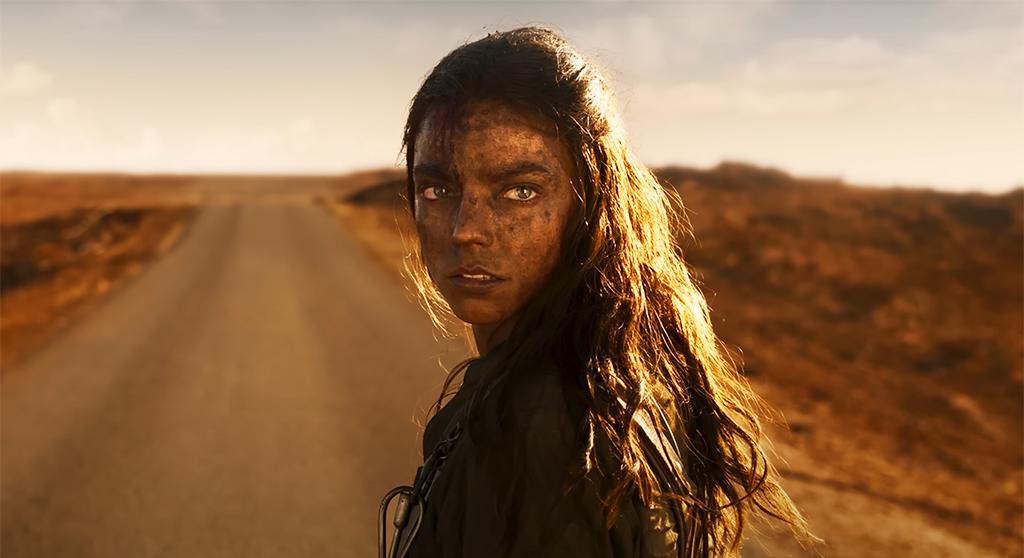
We often talk about directors playing around in a metaphorical sandbox, but George Miller uses the most actual sand. The Australian auteur has made an impressive variety of pictures—a sick-kid melodrama, an animated penguin musical, a mythological whatsit about a narratologist and her djinn—but he’ll forever be associated with the Mad Max films, those apocalyptic action epics where he wanders into the desert and smashes his million-dollar toys into bits. It isn’t quite that Miller keeps making the same movie over and over—more that he keeps finding new ways to reignite the simple, cathartic charge of vehicles speeding across the screen and bursting into flames. Furiosa represents his fifth such effort, and whether or not it’s his best (must our infernal culture always rank things?), it’s proof that he’s gotten awfully good at blowing things up.
In quantitative terms, Furiosa is a less herculean effort than its immediate precursor, Mad Max: Fury Road, which achieved cinematic immortality for its wall-to-wall (dune-to-dune?) automotive carnage. I remain a modest dissenter to Fury Road’s reception as a modern masterpiece—for all its brawny magnificence, it’s deficient in terms of theme and character—but I admire it for its bravura skill and relentless momentum; aside from a brief (and fairly dull) interlude by a desolate tree, it’s essentially one long, exhilarating car chase. Structurally, Furiosa is more conventional, using rip-roaring set pieces as exclamation points as it unspools a fraught, sprawling narrative. Yet conceptually, it’s far more ambitious—spanning decades instead of days, adopting a Tarantino-esque blueprint (five numbered chapters), and interrogating the ecstasy and futility of vengeance.
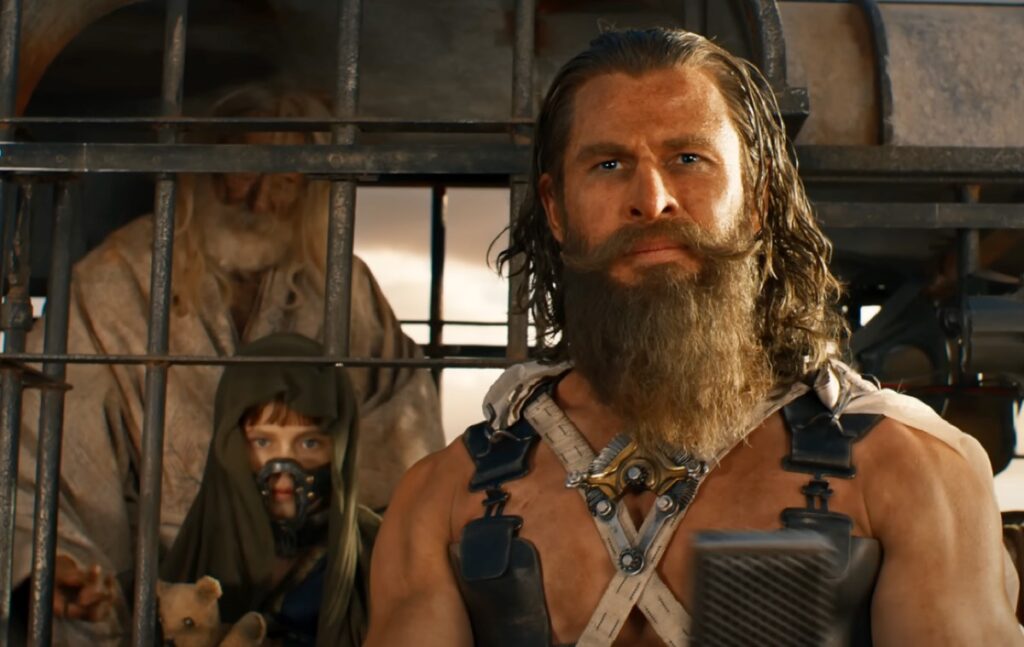
Not that it skimps on vehicular mayhem. The centerpiece of Furiosa is a long, hard-charging sequence in which a gigantic “war rig”—basically a truck hauling a supine metallic cylinder the size of an aircraft carrier—careens through the outback while being accosted by all manner of wheeled pursuers. In one sense, it’s just another variation of the franchise’s primordial conceit—a bigger version of Mel Gibson blasting his way through the outback in an eight-cylinder GT. But the thrill of the movies is that a concept as simple as one car racing after another carries infinite possibility, and here Miller has revitalized the chase template with astonishing verve. It’s a symphony of coordinated chaos: Combatants vault between vehicles while hurling spears, clamber across a chassis’ underside an inch from the ground, and—in the film’s most inspired touch—glide through the air while tethered to zooming motorbikes, like demented terrestrial parasailors. Impossibly, all of this pandemonium unfolds with sparkling clarity and tangible weight, allowing you to both follow the flow of the action and feel its bone-crunching impact. This scene, with its majestic artistry—its mix of vigor, precision, and imagination—is better than anything in Fury Road. It might be better than anything in any movie, period.
OK, settle down. But such hyperbole is a natural consequence of Miller’s heedless filmmaking zeal. He may not be the most ingenious director of this era (Steven Spielberg? Park Chan-wook?), but with the possible exception of James Cameron, he seems peerless when it comes to throwing his money at the screen and putting on a dazzling show. Yet with Furiosa, he has calibrated his maximalist instincts in favor of something more modulated, even humane. Rather than assaulting viewers with ceaseless showmanship, he has prioritized dramatic sweep and personal texture, resulting in a Mad Max flick that’s both familiar and unprecedented. By which I mean: This one tells an interesting story.
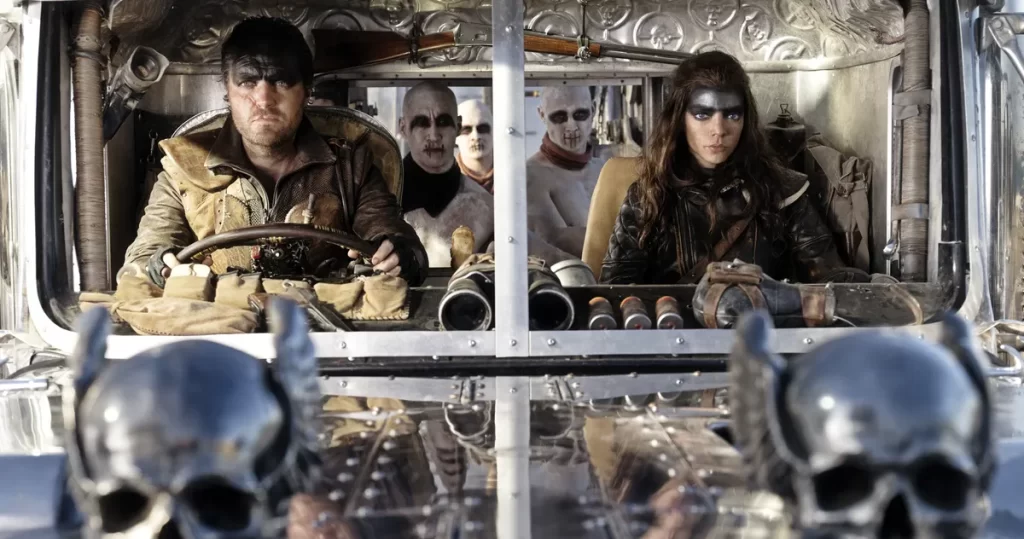
Not a surprising one, mind you. By virtue of being a prequel—we previously met its titular warrior in Fury Road, when she was played by Charlize Theron—Furiosa traverses an arc whose terminus is preordained. We know, for example, that she will enter the employ of Immortan Joe (Lachy Hulme, replacing the late Hugh Keays-Byrne), the despotic leader of the craggy refuge known as The Citadel; we’re also confident that at some point, she will lose her left arm. But the certitude of the destination doesn’t spoil the pleasures of the journey, and Miller’s screenplay (which he wrote with Nick Lathouris) infuses Furiosa’s voyage with intrigue, complexity, and suspense.
It also introduces another first for the franchise: a charismatic villain. That would be Dementus, a swaggering brute played with indecent frivolity by Chris Hemsworth. Outfitted with a billowing white cape, a bushy beard, and a teddy bear (yes!), Dementus is no less evil than Immortan Joe, but he’s a lot more fun to be around, and Hemsworth imbues him with a madness that’s both disturbing and oddly cheerful. In an environment that’s undeniably solemn and heavy, he supplies a light touch.
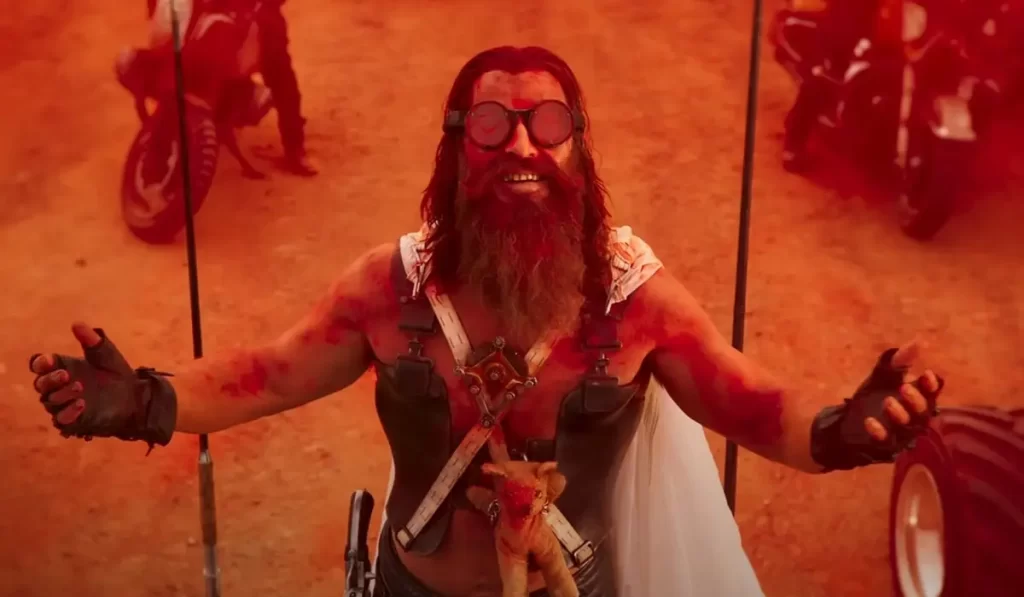
That might be news to Furiosa, who becomes Dementus’ sorta-ward, sorta-captive after she’s kidnapped from her verdant homeland (the nigh-mythical “green place” referenced in Fury Road). The movie’s first two chapters chronicle Furiosa’s hectic preadolescence, when she’s played by a wide-eyed Alyla Browne, who nicely conveys the character’s intelligence and savagery. (Browne previously portrayed Tilda Swinton’s younger self in Miller’s Three Thousand Years of Longing.) Beyond showing off the picture’s mighty craftsmanship—Colin Gibson’s production design is a towering achievement of rocky grandeur, while Simon Duggan’s widescreen cinematography adds rich reds and blues to the omnipresent orange—these passages allow Miller to gently but persistently expand the saga’s scope. We visit two other “fortresses of the wasteland,” the eponymous outposts of Gastown and the Bullet Farm, and we gain a greater understanding of this post-apocalypse’s logistics. While it may seem silly to watch Dementus and Immortan Joe haggle over food rations and ownership stakes, such scenes round out the film’s triangular conflict, even as they also invisibly lay the groundwork for Furiosa’s simmering rebellion.
Just who is this girl, who soon ages—as communicated via a clever time-lapse shot of a branch protruding from an outcropping—into a seemingly mute young woman in the lithe form of Anya Taylor-Joy? The nominal purpose of Furiosa is to answer that very question—to flesh out her backstory and understand her motivations. What’s curious is that the Mad Max pictures have never centered on character; Max himself, whether played by Gibson or Tom Hardy, was always an avatar of unbridled rage. Furiosa is no less ferocious, but the movie that bears her name isn’t especially concerned with filling in any supposed gaps in her past. (As a rule, Miller is rightly untroubled by any quibbles over continuity; for that reason, it scarcely matters that Taylor-Joy looks nothing like Charlize Theron.) Instead, it illuminates her personhood through small gestures and quiet observations: how she chops off her hair to deflect attention from Immortan Joe’s lecherous son, how she dons a skullcap and poses as a voiceless “war boy,” even how she urinates in private to preserve her secrecy.
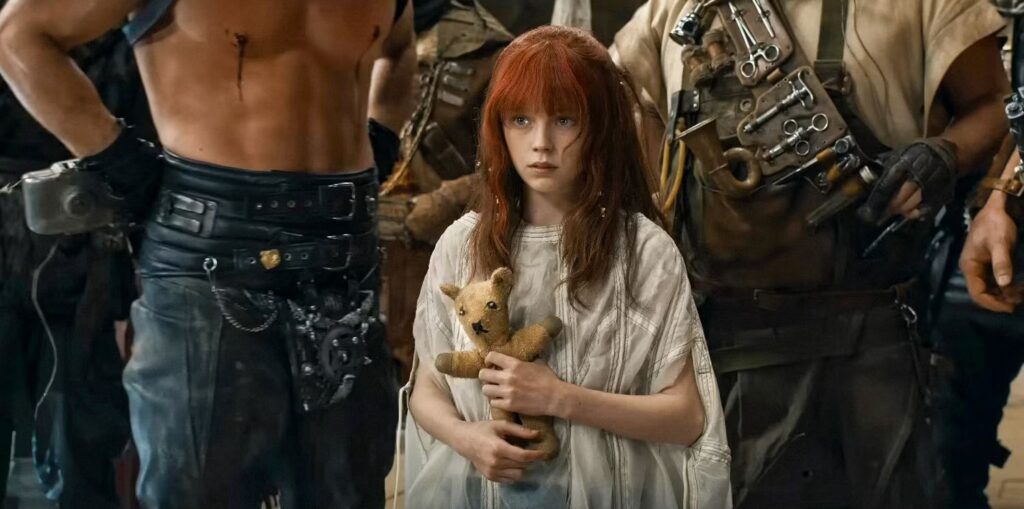
Crucial to this emerging portrait is Taylor-Joy, an agile performer who here evinces the classical intensity of a silent-film star. Furiosa doesn’t talk much—nobody in this movie does, aside from Dementus—but Taylor-Joy says plenty with her eyes, which flash anger, resolve, and desire. The last of these emotions is connected in part to Praetorian Jack (Tom Burke, indispensable), one of Joe’s most lethal lieutenants. The bond that flourishes between Furiosa and Jack isn’t quite a love story, but it’s the stuff of genuine affection, even if it’s forged in fire and blood.
This relationship—a loyalty that’s largely unspoken yet plainly, deeply felt—mirrors the broader movie, which is simultaneously intimate and grand. One member of Dementus’ entourage is called the History Man (George Shevtsov), a heavily tattooed scholar who acts as a walking encyclopedia, providing his master with factual nuggets on command. He also offers periodic narration, and his presence lends context and shape to the franchise’s massive scale. In particular, a late voiceover on the perpetuity of war emphasizes the enormity of this cinematic universe—not just as a matter of boisterous action, but as a study of regression and evolution.

And yet, for all its grandiosity—its rifles and bazookas, its evasions and explosions, its burst of a powder flare that turns Dementus’ grey beard a sickly red—Furiosa is granular and, at times, even restrained. This duality is most evident in its climax. On one level, it’s an electrifying demolition derby, complete with a monster truck rampaging over a ridge in pursuit of a roadster as feeble motorbikes somersault into oblivion. But it’s also a decidedly personal face-off, in which the roars of engines are replaced by the venting of grudges and the encroachment of fears. “I am nothing like you,” Furiosa spits at Dementus; “you are me!” he responds, and the potential truth of his retort wounds her more severely than any blade or bullet ever could. By refusing to sentimentalize Furiosa—by making her a real person rather than a cipher of senseless revenge—Miller and Taylor-Joy pay tribute to her fundamental humanity.
Which is what ultimately distinguishes Furiosa from its forebears. It’s tempting to constantly measure it against Fury Road, a comparison that Miller unwisely invites by interspersing footage from the latter into its closing credits. But that’s the only moment where Furiosa exhibits any sort of debt to its predecessor. Like its indomitable heroine, this movie stands boldly, defiantly on its own.
Grade: A-
Jeremy Beck is the editor-in-chief of MovieManifesto. He watches more movies and television than he probably should.
